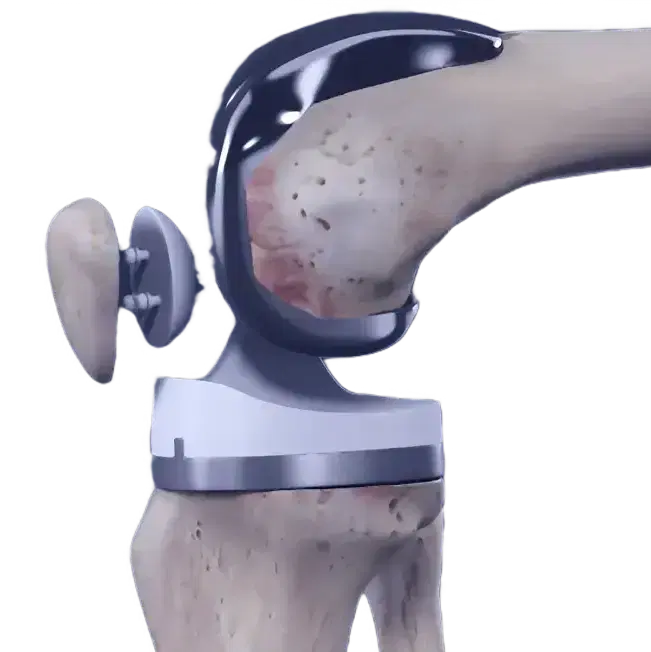ACL Reconstruction Rehabilitation Protocol
Weeks 0-2

Goals
Pain & post-operative swelling management
To establish 0-90° range of motion (Full extension priority!)
Patient education regarding gait, balance and wound management

ROM (Range of motion)
Exercise to establish a range 0-90° with the aid of heel slides.
Calf & hamstring passive stretches
Exercise bike (slow cycles and low resistance)

Muscles
Isometric and eccentric hip flexion, extension and abduction (both standing and lying down)
Static and Inner range quadriceps exercises (cushion under thigh, extend knee).
Standing single & double heel raises (this can be done with or without support)
Static and co-contraction (with quadriceps)
Mini wall squats (up to 30°).
Quadriceps
Static and co-contraction (with quadriceps)
Static lunges
Sit to stand
Hamstrings
Gluteals
Calves
Proprioception
Single leg stance for 30 to 60 seconds

Gait
Start full-weight bearing with 2 crutches (progress to one crutch until patient has normal gait with 1)
Weight-shifting exercises (side-to-side & forward-and –backward)

Modalities




Week 2 – Week 6

Goals
Progress to full knee flexion and extension
Achieve normal gait pattern
Strength opposite limb
Progress with proprioception

ROM (Range of motion)
Exercise to establish a range 0-90° with the aid of heel slides.
Standing calf and hamstring stretches
Assisted quadriceps stretching exercises (standing)
Heel slides and exercise bike (allow full circles forward & backward)

Muscles
Hip strengthening all directions (with ankle weight). Both concentric & eccentric exercises.
Forward & Lateral step-ups (ensure body weight passes through heel)
Assisted squats with increasing range and resistance as tolerated.
Commence leg press machine (allow a maximum of 70% body weight)
Bridging lying supine on the floor with legs on a Swiss ball
Progress to single heel raises (with or without support)
Prone assisted hamstrings (use opposite limb)
Wall squats (allow maximum of 60°)
Quadriceps
Hamstrings
Gluteals
Calves
Proprioception
Double/single leg stance (with eyes forward, looking away and closed)
Double/single leg stance (with eyes forward, looking away and closed)

Gait
Progress to unassisted full weight bearing
Exaggerate hip and knee flexion during swing phase of gait

Cardiovascular


Week 6 – Week 9

Goals
To achieve full, pain free range of motion
Begin limited/specific isokinetic quadriceps exercises

ROM (Range of motion)
Achieve full knee flexion and extension
Continue hamstring and calf stretches

Muscles
Active low resistance hamstring curls in prone, standing and sitting positions
Advance on all direction strengthening (ankle weights, resistance cables)
Full & inner range squats with increasing resistance as tolerated
Eccentric lateral step downs (slow, controlled knee flexion)
Static lunges (all directions) progressing to dynamic lunges
Bridging (supine on the floor with legs on a Swiss Ball)
Initiate isokinetic quadriceps rehabilitation programme
Full wall squats (up to 90°).
Step – ups (up to 20cm)
Quadriceps
Hamstrings
Gluteals
Calves
Proprioception
Single leg stance on mini-trampoline
Upper body work (throwing)
Floor disc squatting & throwing
Wobble board (balance)

Gait
Hydrotherapy sessions: Knee ROM, walking (all directions), hip ROM

Cardiovascular




Week 9 – Week 12

Goals
Progressive quadriceps & hamstring strengthening, proprioception and flexibility

ROM (Range of motion)
Continue stretches as before ensuring achievement of full knee range of motion

Muscles
Hamstring curls (in the standing, sitting and prone position) with increasing resistance as tolerated
Low resistance jumping (2 legs, then jogging, then single leg hops)
Dynamic lunges ensuring proper truncal alignment
Progress with isokinetic programme
Eccentric hamstring rehabilitation
Eccentric step downs (20cm)
Quadriceps
Backward step-ups
Single leg squats
Hamstrings
Gluteals
Progress as before
Calves
Eccentric heel drops
Proprioception
Catching & throwing exercises on wobble boards & mini-trampoline
Single leg stance on a floor disc (kicking drills, upper body skills)

Cardiovascular




Week 12 – Week 16

Goals
Continue flexibility and strengthening of the lower chain
Commence sport specific quadriceps/hamstring strengthening, proprioception & cardio fitness

Muscles
Continue concentric & eccentric quadriceps and hamstring exercises
Backward lunge walking
Progress from jogging to running
Split squat jumps
Single leg drop landing (5cm)
Proprioception
Ladder drills (forwards/backwards/side-to-side)
Side step-overs (progressing to side step-overs)
Skipping and hopping (2 legs progressing to single leg)
Mini-trampoline (2 feet jumps – jogging – single leg jumps)
Continue single leg floor disc exercises (aim for sport specific activities. E.g.: kicking, hockey shot, cricket batting etc.)

Cardiovascular



Week 16 - Week 26

Goals
Sport specific lower chain strengthening and progress to plyometric exercises
Continue proprioceptive & cardiovascular fitness Muscles
Progress as before concentrating on specific deficits on muscle groups (if any arise)

Agility & Plyometrics
Progress on running/lunging/vertical jumps/run-stop-sidestep
Single leg drop landing (progressive up to 25cm)
Box hops/jump and forward sprints
Single leg forward & side hopping.
Ladder drills (all directions)
Single leg jumps
Proprioception
Progress on mini-trampoline
Forward & side hops (maintain 5 second single leg balance on landing)
Cutting drills (quick stop & balance)

Cardiovascular
Continue concentric & eccentric quadriceps and hamstring exercises
Backward lunge walking
Progress from jogging to running
Split squat jumps
Single leg drop landing (5cm)
6-9 Months

Goals
Adequate cardiovascular fitness, strength, power, agility neuromuscular control, symmetry and stability
Continue with upper body strengthening
Back to sport practice for upper skills (as able)
Return to sport skills on own at practice with minimal risk of re-injury

Exercise Suggestions
Single leg drop jump 6” step
Large Figure 8’s
Carioca running full speed
Last minute decision drills
2 and 1 foot hopping with control
Forward and lateral hop with control and comparable distance L&R
Triple jump and landing with control and comparable distances L&R
Single limb hop for distance (within 15% of uninvolved side) control and comparable distances L&R
Single-limb crossover triple hop for distance (within 15% of uninvolved side)
Single-limb timed hop over 6 m (within 15% of uninvolved side)
Single limb vertical power hop (within 15% of uninvolved side)
Single limb drop landing (within 15% of uninvolved side)
Single limb drop-jump
10 second single limb maximum vertical hop (both sides)

Return to sport
Most successful individuals return to sport after 8-10 months post-surgery, provided the knee is free from pain and swelling during functional training.
Adequate strength and endurance for the specific sport are necessary.
Return time varies individually, and concurrent injuries may delay the timeline. Surgeons will advise an appropriate return time based on progress. If you are under 18, the greatest risk factor for re-tear is considered, and most patients will remain off sport for 12 months.

Do you need a
Knee replacement?
Dr Seeto in affiliation with Medibank Private and East Sydney Private hospital, offers a program for eligible Medibank Private Members, to eliminate medical out of pocket costs for your Knee Replacement.
The program includes a pre-surgery preparation program, spending the minimal time necessary in hospital, as well as home rehabilitation if necessary.
Book a consultation
today
9:00 am - 4:30 pm

